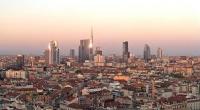In the 4th-November issue of our twice-weekly newsletter, we said that automated homes will be the homes of the future. In the present issue we would like to add some other features to the comforts provided by home automation. Property-buyers demand homes with environment-friendly state-of-the- ...
Bioclimatic architecture creates an ideal setting for living
In the 4th-November issue of our twice-weekly newsletter, we said that automated homes will be the homes of the future. In the present issue we would like to add some other features to the comforts provided by home automation. Property-buyers demand homes with environment-friendly state-of-the-art technologies that can be bought at a reasonable price and do not exceed their budget.
Brand-new architectural solutions are being applied to newly-built homes in order to improve their energy efficiency and save up to 30% of energy consumption: they will be shown at the Triennale Bovisa exhibition that will take place until 9th January 2011 in Milan, Italy.
There will be 80 projects designed by young Italian architects on show. They will give some interesting hints on how to use building materials to reduce construction costs and to cut bills.
The pioneering solutions proposed within the exhibition share a common idea: enhancing the relationship between homes and nature and substitute common materials with covers that have more affordable prices. Green building and bioclimatic architecture give priority to the climatic conditions of the area where the home is located; indeed, home orientation is the first characteristic to take into account. The new relationship between the interior rooms and the outdoor spaces of a house may become key issues during the purchase/sale of a home.
Among the ground-breaking ideas and inventions displayed at the Triennale Bovisa exhibition there are “bioclimatic” greenhouses that help heating the buildings by collecting sunlight. They are increasingly demanded because they allow keeping the right temperature in every season. They will be used together with solar panels that can generate and supply electricity to residential applications directly, enabling the home to become almost self-sufficient.
The homes of the future will have large glass doors and windows to create environmentally-dynamic light-transmitting walls. The environmental performance of the home can be improved; indeed, glass walls represent an effective system to achieve great energy savings in house building and to grant lower running costs. Balconies, terraces and verandas can be closed with glazed walls that let sunlight enter sending out a pleasant warmth in the room and increasing natural lighting.
Glass walls and solar greenhouses reduce heating expenses and power consumption; indeed, natural heating can be also used for domestic appliances by induction.
One of the prime objectives of bioclimatic buildings designers is to use the resources offered by the climate to reduce the use of fossil fuels and lower energy consumption in order to reach excellent health conditions and the wellbeing of the user. The final aim is to create the ideal environment for inhabitants. Thermal insulation systems will be more and more efficient and glass walls more and more resistant to breakings.
The average price of an eco-building is very similar to the price of a “traditional” home, but a sustainable home offers numerous benefits. By using the proper building materials and techniques, it is possible to maintain an ideal temperature inside the house thus saving a great amount of energy and cutting bills. Fireplaces and air-conditioning systems become almost useless; nonetheless, the presence of a fireplace may create a more familiar and welcoming atmosphere.
Click on the following links to learn more about sustainable investment opportunities:
- Residential: Saving money with clean energy
- Transform your house into an eco-friendly dwelling
- France: the indications of the energy efficiency class of real estate properties becomes compulsory
- United Kingdom: Environment-friendly houses for sale in Cornwall
Related Insights
-
Bioclimatic architecture creates an ideal setting for living
Real Estate Listings
For sale Other (Commercial), Italy, Milan, Sesto San Giovanni, Via Libero Biagi Sesto San Giovanni

For sale
Other (Commercial)
920 m²
For sale 5+ Bedrooms, Italy, Milan, Milan, via Oltrocchi

For sale
5+ Bedrooms
151 m²
For sale Development Property, Italy, Milan, Bernate Ticino, Vicolo San Carlo
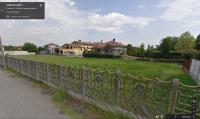
For sale
Development Property
2100 m²
For sale Business, Italy, Milan, Milan, Via Rembrandt
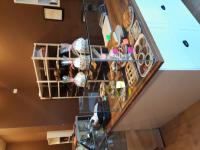
For sale
Business
35 m²
For sale Terraced House, Italy, Milan, Settala, Via Pergolesi
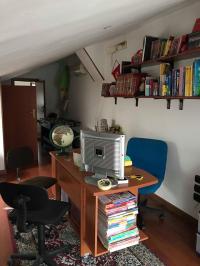
For sale
Terraced House
260 m²
For sale 4 Bedrooms, Italy, Milan, Milan, quartiere dei Giornalisti - Mi
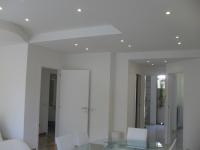
For sale
4 Bedrooms
130 m²
For sale 4 Bedrooms, Italy, Milan, San Colombano al Lambro, Via Steffenini 93
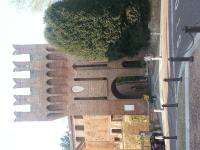
For sale
4 Bedrooms
104 m²
For sale Hotel, Italy, Milan, Milan, milano via stresa
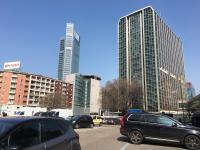
For sale
Hotel
2100 m²
For sale 3 Bedrooms, Italy, Milan, Milan, valsesia 76

For sale
3 Bedrooms
120 m²

